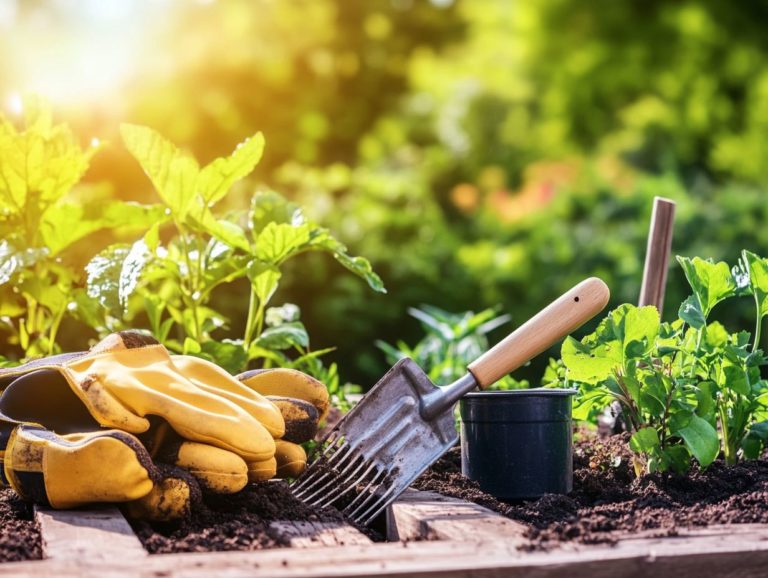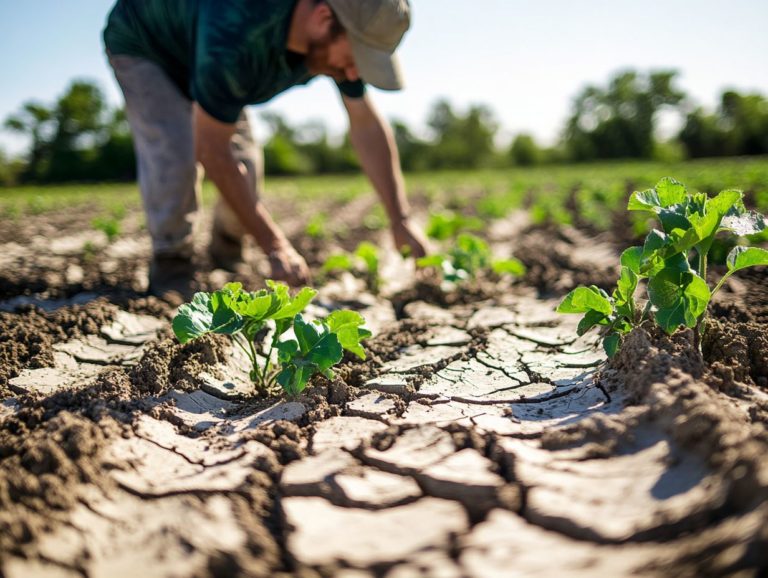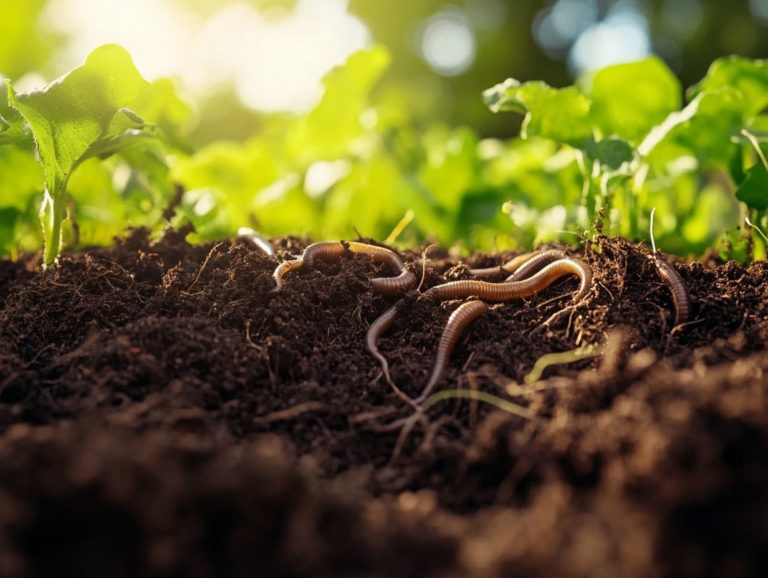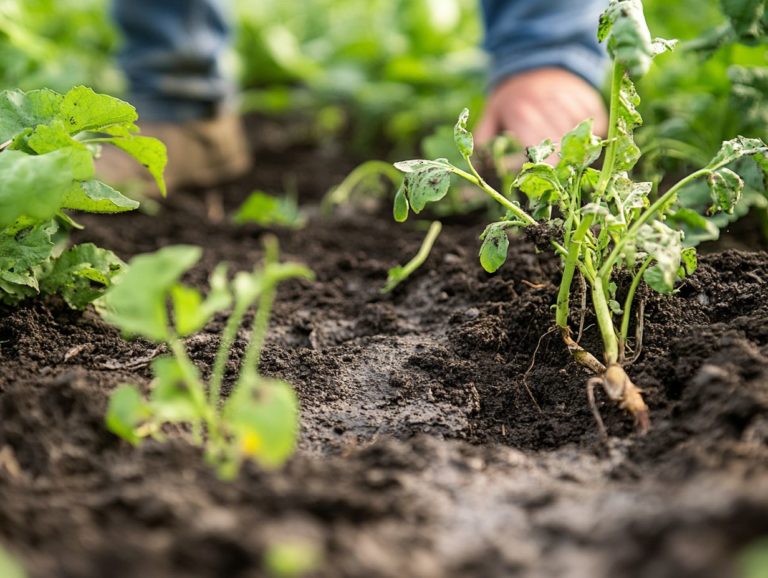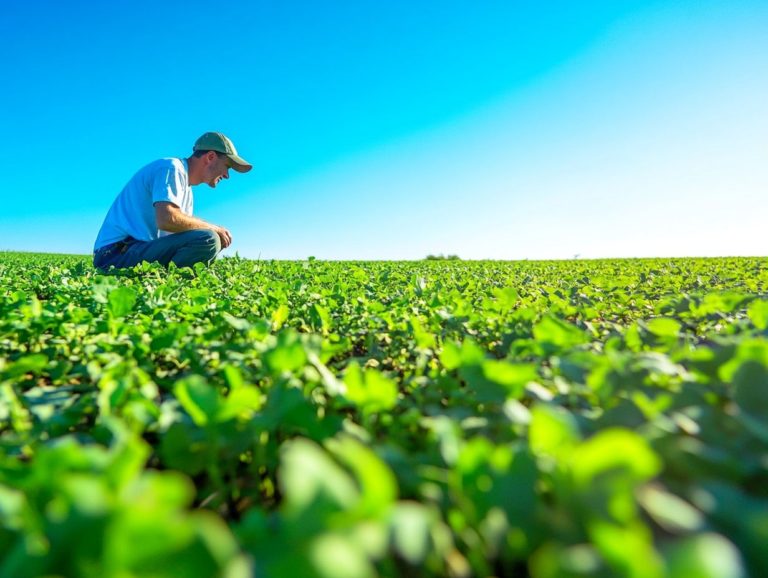3 Innovative Techniques for Soil Aeration
Soil aeration is an essential practice that significantly enhances plant health and fosters sustainable gardening.
In this article, you will discover three innovative techniques: core aeration, liquid aeration, and soil spiking.
You ll delve into the importance of soil aeration, uncover its myriad benefits, and explore the best practices for achieving optimal results.
We ll also address common pitfalls to avoid, how frequently you should aerate your soil, and future advancements in aeration technology.
Are you prepared to elevate your soil s vitality? Let s dive in!
Contents
- Key Takeaways:
- 1. Core Aeration
- 2. Liquid Aeration
- 3. Soil Spiking
- What Is Soil Aeration and Why Is It Important?
- What Are the Benefits of Soil Aeration?
- What Are the Different Types of Soil Aeration Techniques?
- How Do Core Aeration, Liquid Aeration, and Soil Spiking Work?
- What Are the Best Practices for Soil Aeration?
- How Often Should Soil Aeration Be Done?
- What Are the Common Mistakes to Avoid in Soil Aeration?
- How Can Soil Aeration Improve Plant Growth and Health?
- What Are the Environmental Benefits of Soil Aeration?
- Can Soil Aeration Be Done in All Types of Soil?
- What Are the Cost Considerations for Soil Aeration?
- Are There Any Potential Risks or Side Effects of Soil Aeration?
- What Are Some Other Innovative Techniques for Soil Aeration?
- How Can Soil Aeration Contribute to Sustainable Agriculture and Gardening?
- What Are the Future Developments in Soil Aeration Technology?
- Frequently Asked Questions
Key Takeaways:
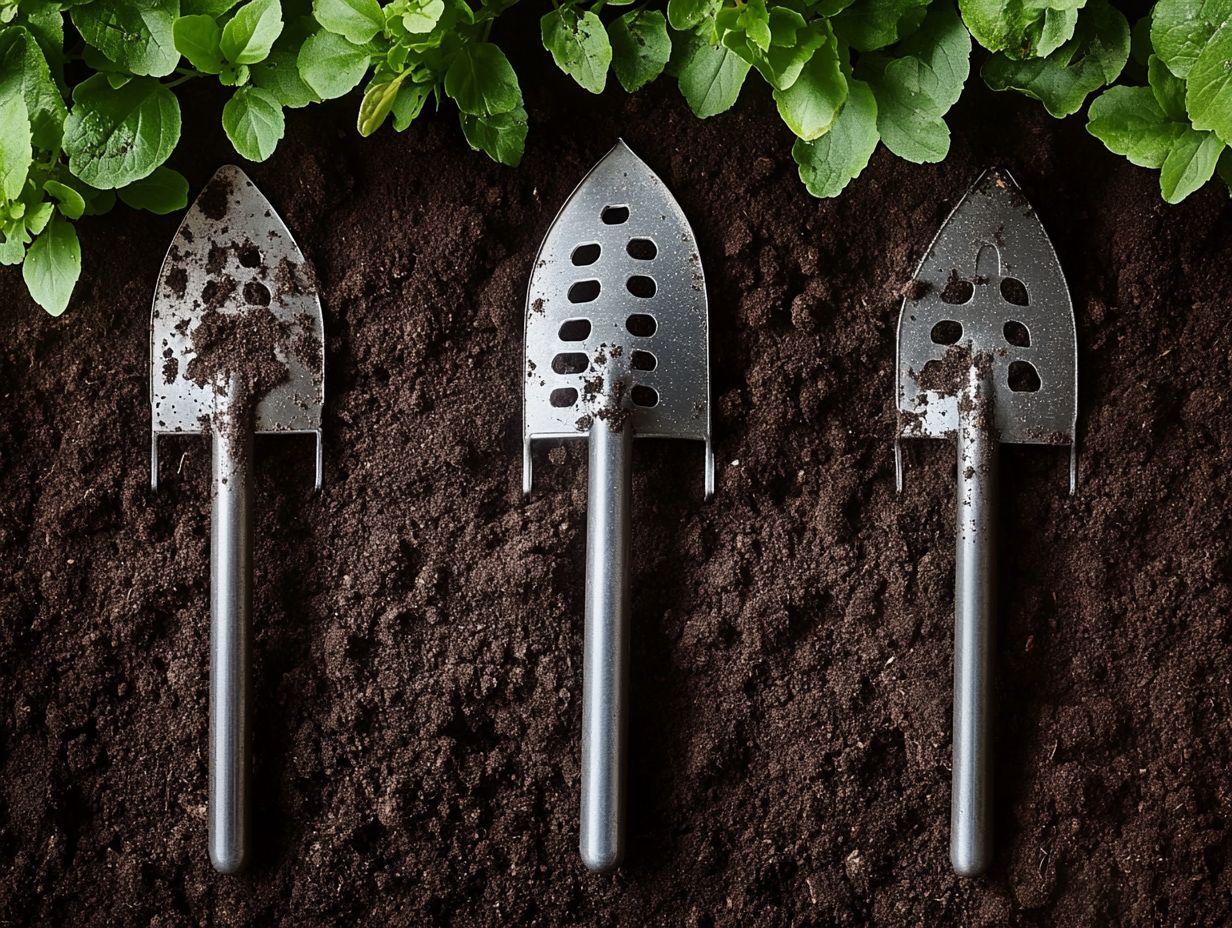
- Discover how core aeration can revolutionize your garden s health by loosening compacted soil and allowing for better air and water circulation.
- Learn about liquid aeration, which uses natural enzymes to break up soil compaction making it a less invasive and more environmentally friendly option.
- Understand how soil spiking creates small holes in the soil to improve nutrient absorption and promote healthy root development.
1. Core Aeration
Core aeration is a pivotal agricultural practice involving the strategic removal of plugs from compacted soil. This technique enhances air supply, promoting healthy plant roots.
It also fosters a vibrant ecosystem that nurtures optimal microbial activity and nutrient absorption. This method is particularly effective in addressing soil compaction, enabling improved water infiltration and root establishment.
By creating channels within the soil, core aeration elevates oxygen levels, essential for healthy soil microbes that aid in nutrient breakdown. Additionally, it alleviates waterlogging by enhancing drainage, preventing root rot and other moisture-related complications.
Core aeration maintains balanced moisture levels and nurtures a thriving microbiome, crucial for nutrient cycling.
Ultimately, this practice enhances soil structure, supports beneficial organisms, and encourages vigorous plant growth, resulting in a resilient agricultural ecosystem.
2. Liquid Aeration
Liquid aeration is an innovative technique that boosts soil health by using a liquid solution to create air spaces within compacted soil. This method improves moisture levels and facilitates better nutrient uptake for your plants.
What sets liquid aeration apart from traditional methods is its ability to penetrate deep into the soil. By employing a specially formulated liquid, it effectively loosens stubborn compacted layers while introducing essential microorganisms and organic matter.
These beneficial elements restore the natural balance of nutrients and foster a thriving ecosystem for plant roots. As a result, your gardens and lawns will enjoy enhanced growth and increased resilience to drought.
Liquid aeration emerges as a sustainable choice for rejuvenating your soil.
3. Soil Spiking
Soil spiking is an effective aeration method involving inserting spikes into the ground to alleviate compacted soil. This promotes air supply and enhances water infiltration, ultimately fostering healthier plant roots.
This technique breaks up hard layers within the soil while encouraging a thriving ecosystem. By creating channels for oxygen and moisture to penetrate deeper, soil spiking cultivates an environment where beneficial earthworms can flourish.
These earthworms play a crucial role in soil aeration and the breakdown of organic matter, enhancing microbial diversity. Consequently, the overall soil structure improves, making it more resilient to erosion and better at retaining nutrients.
You ll witness healthier plant development, translating to improved crop yields underscoring the transformative power of this seemingly simple technique.
Start aerating today for a thriving garden tomorrow!
What Is Soil Aeration and Why Is It Important?
Soil aeration involves creating air spaces in the soil. This is crucial for enhancing oxygen availability that plant roots need.
This process boosts nutrient absorption and addresses compacted soil challenges, fostering a flourishing ecosystem.
With improved aeration, you create an inviting environment for beneficial microorganisms. This is essential for optimal soil fertility and vigorous crop growth.
By allowing air pockets to form within the soil structure, you nourish root systems. This actively prevents root rot, an ailment often linked to bacteria that thrive without oxygen in compacted, oxygen-starved conditions.
Thus, maintaining proper soil aeration becomes vital for sustainable agricultural practices. It enables you to cultivate healthier crops with a reduced reliance on chemical fertilizers.
It also supports natural recycling of organic matter, promoting ecological balance and contributing to a more resilient agricultural system that can endure environmental stresses.
What Are the Benefits of Soil Aeration?
The benefits of soil aeration are remarkable. It greatly enhances soil health in multiple ways.
Soil aeration improves nutrient absorption, promotes robust crop growth, and fosters the microbial diversity essential for a balanced ecosystem.
This process increases the air supply to plant roots, facilitating better respiration and stimulating early root development.
By enhancing water infiltration, aeration helps to prevent waterlogging. This can lead to root diseases.
Adequate aeration is pivotal in preventing diseases like root rot. It maintains an optimal balance of moisture and oxygen in the soil.
These advantages create a thriving environment for plants, resulting in healthier crops and improved yields.
What Are the Different Types of Soil Aeration Techniques?
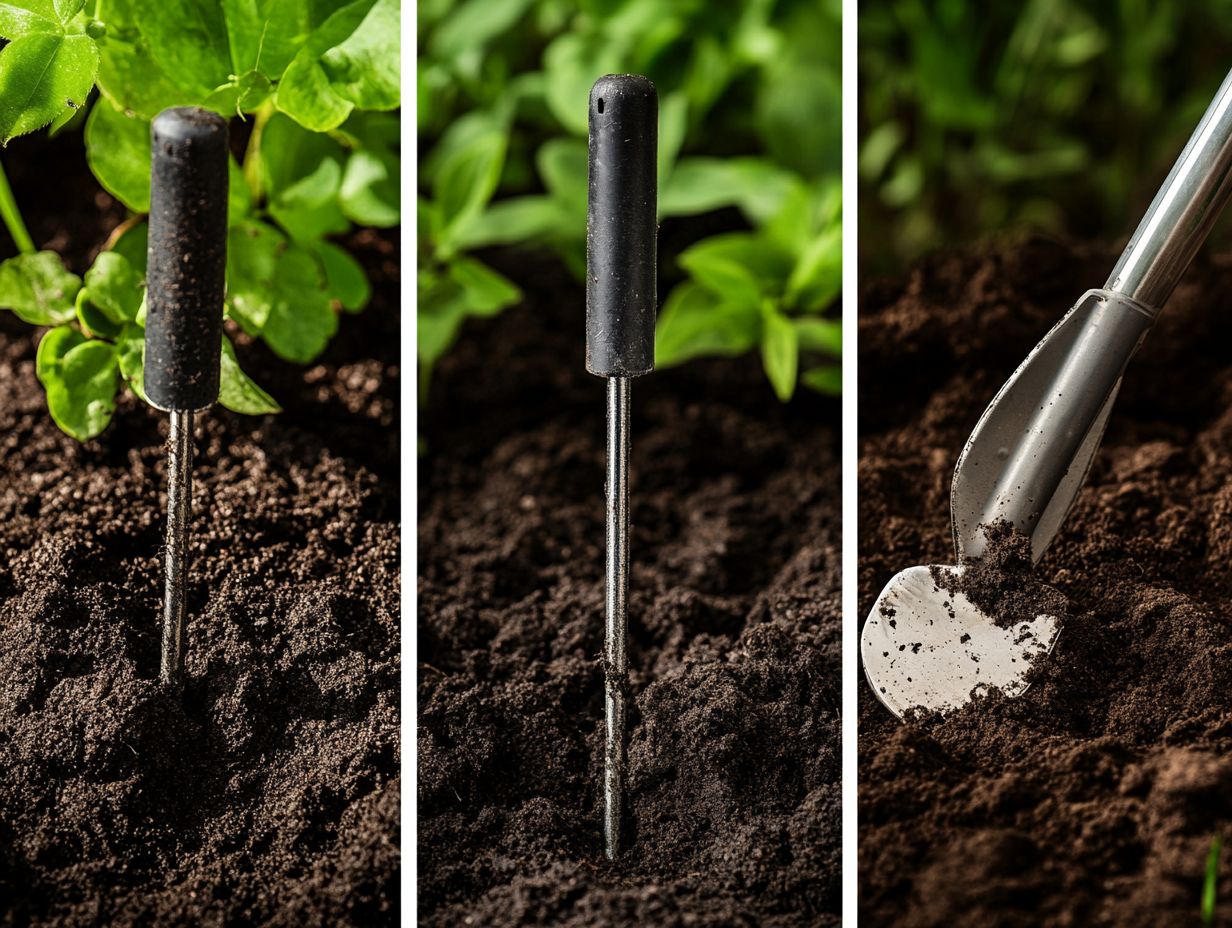
You have a variety of soil aeration techniques at your disposal, including core aeration, liquid aeration, and soil spiking.
Each method employs distinct tools and approaches designed to enhance soil structure and overall health.
Take core aeration, for example. This technique involves removing small plugs of soil. This allows air, water, and nutrients to penetrate more deeply.
It’s especially effective in heavy clay soils that tend to compact easily. Core aeration alleviates pressure and promotes robust root growth.
On the other hand, liquid aeration utilizes a specialized solution that breaks down compacted soil. This makes it easier for roots to access essential resources.
This method is most effective during dry spells. Meanwhile, soil spiking uses specialized devices to create holes in the ground, improving drainage and helping to prevent waterlogging.
Each of these techniques offers unique advantages and thrives under specific conditions, making them invaluable tools for you as a gardener or landscaper looking to enhance soil vitality.
How Do Core Aeration, Liquid Aeration, and Soil Spiking Work?
Core aeration, liquid aeration, and soil spiking are your go-to methods for enhancing soil aeration. Each is tailored to alleviate compacted soil and create air spaces that encourage microbial activity and promote healthy plant growth.
By addressing the specific needs of your soil, these techniques significantly improve water infiltration and nutrient availability key ingredients for plant vitality.
Core aeration removes small plugs of soil, creating voids that facilitate airflow and enhance the absorption of essential nutrients.
On the flip side, liquid aeration employs a blend of surfactants and soil conditioners. These work at the molecular level to reduce compaction, allowing roots to penetrate those stubborn, dense layers with ease.
Meanwhile, soil spiking uses specialized tools to puncture the ground, providing immediate relief to those compacted areas.
Each method incorporates advanced technology aimed at delivering optimal results, ensuring your landscape flourishes with lush resilience.
What Are the Best Practices for Soil Aeration?
Implementing best practices for soil aeration is essential for maximizing soil health, optimizing moisture levels, and enhancing crop yields through effective management of your soil environment.
To achieve this, consider aerating your land during the cooler parts of the day to minimize stress on your crops, ensuring that the soil remains uncompacted. Consistent aeration, ideally two to three times a year, helps prevent nutrient runoff and fosters better water infiltration.
Incorporating organic matter like compost and mulched cover crops enriches your soil and enhances its structure, promoting improved airflow and drainage. These actions create a thriving environment for beneficial microorganisms, vital for sustaining long-term soil fertility.
How Often Should Soil Aeration Be Done?
Determining how often you should aerate your soil hinges on various factors like soil health, moisture levels, and the degree of hardening. These elements will guide you in crafting effective aeration schedules.
Understanding the unique properties of different soil types is essential for success. For example, sandy soils require less frequent aeration due to their natural drainage capabilities, while clay soils benefit greatly from regular aeration to relieve hardening.
The specific needs of your crops are crucial; certain crops flourish in well-aerated soils, especially during their growing seasons. Seasonal conditions such as rainfall amounts and temperature fluctuations also play a critical role in determining the optimal timing for aeration, ensuring that your practices support immediate plant health and nurture long-term soil vitality.
What Are the Common Mistakes to Avoid in Soil Aeration?
Common mistakes in soil aeration can lead to ineffective practices that compromise soil health, such as ignoring the signs of hardening or neglecting to assess soil moisture levels before aeration.
Ignoring these factors can lead to poor results. For example, aerating when the soil is too wet may inadvertently compact it further, while dry soil can resist the penetration needed for effective aeration.
Using improper equipment or techniques can worsen the situation, disrupting the natural soil structure and causing long-term degradation.
By recognizing the right timing and employing the correct methods, you can significantly enhance nutrient absorption and boost overall soil vitality.
How Can Soil Aeration Improve Plant Growth and Health?
Soil aeration transforms your garden, dramatically enhancing plant growth and health by improving nutrient absorption, facilitating root establishment, and fostering an ideal environment for microbial activity within the soil.
When your soil is well-aerated, oxygen can penetrate deeper layers, allowing roots to expand and access essential minerals and water efficiently. This process fortifies the plant’s overall structure and bolsters its resilience against environmental stressors, such as drought and heavy rainfall.
Moreover, the increase in microbial activity that accompanies better aeration plays a vital role in breaking down organic matter and releasing crucial nutrients, leading to lush foliage and vibrant blooms. Healthy plants in well-aerated soil are more resilient against pathogens and pests, resulting in enhanced overall vitality.
What Are the Environmental Benefits of Soil Aeration?
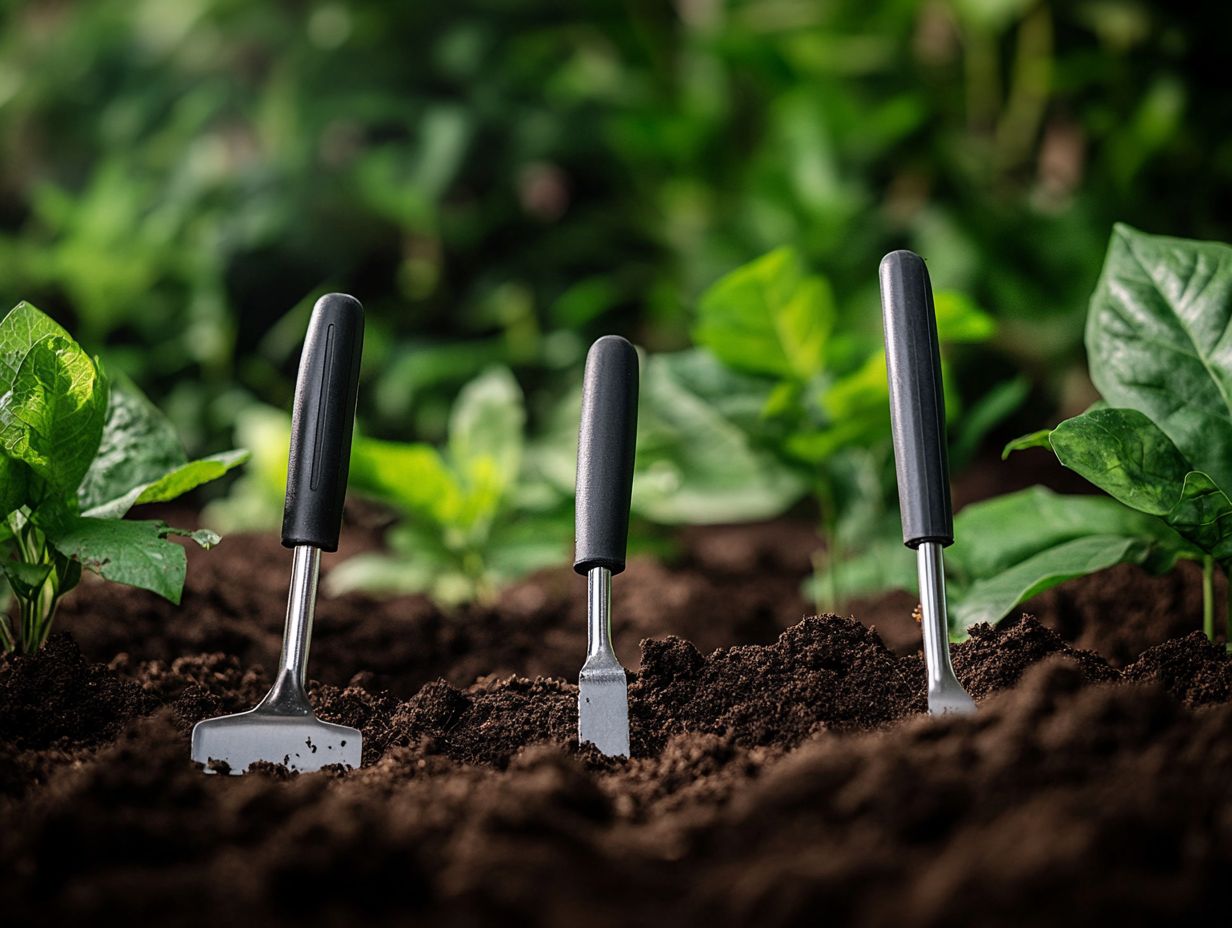
Soil aeration offers many advantages, but you need to be aware of some risks. The environmental benefits of soil aeration are significant, supporting a vibrant ecosystem and enhancing soil health while promoting sustainable agricultural practices that reduce environmental impact.
By improving the soil’s structure, aeration allows for better gas exchange and increases the presence of beneficial microorganisms, which are essential for nutrient cycling. This process enhances carbon sequestration, or the process of capturing and storing carbon dioxide, enabling the soil to capture and store carbon dioxide more effectively, thereby helping to mitigate the effects of climate change.
Aeration also improves drainage, reducing waterlogging and preventing excess runoff that can lead to harmful consequences. Additionally, a healthier soil structure fosters plant diversity, which attracts wildlife, creating a balanced ecosystem where all elements coexist in harmony.
Can Soil Aeration Be Done in All Types of Soil?
Soil aeration can be effectively tailored to various soil types, though the techniques and frequency you employ will depend on factors like soil texture, how compact the soil is, and your specific farming practices.
Take clay soils, for instance. These dense, moisture-retaining types can significantly benefit from deep-tine aeration, which breaks up compacted layers and enhances both drainage and root growth.
On the other hand, sandy soils, known for their larger particles and swift drainage, thrive with surface-level aeration methods. Techniques like spiking or utilizing a core aerator will help maintain adequate oxygen levels without causing excessive disruption.
Loamy soils, often hailed as the gold standard for agriculture due to their balanced texture, benefit from a mix of strategies. Regular tilling and timely aeration can significantly enhance their natural fertility while preventing compaction, ultimately leading to healthier, more robust crops.
What Are the Cost Considerations for Soil Aeration?
Planning soil aeration? Keep these cost tips in mind! When considering soil aeration, there are several cost considerations to keep in mind, including the choice of farming tools, labor expenses, and the overall budget set aside for your agricultural practices.
Understanding the money impact of various aeration techniques can greatly affect your profitability. For example, some methods might require a heftier initial investment like renting or purchasing specialized equipment but they often lead to substantial long-term benefits.
By enhancing soil health and boosting crop yields, you can ultimately reduce expenses related to fertilizers and irrigation. Evaluating the labor costs tied to traditional versus modern aeration techniques can also unveil potential savings.
Take a close look at both your immediate expenses and future gains to maximize cost-effectiveness in your agricultural practices!
Are There Any Potential Risks or Side Effects of Soil Aeration?
While soil aeration provides many advantages, you must be mindful of potential risks or side effects, like temporary soil disturbance, increased susceptibility to root rot, or even worsening compaction if not executed properly.
These drawbacks can compromise the vital microbial activities and soil structure essential for robust plant growth. To navigate these challenges, it s important to adopt wise aeration practices, such as timing your aeration for optimal weather conditions, which can help reduce soil damage.
Utilizing the right equipment to prevent over-aeration can greatly enhance your results. Establishing a regular aeration schedule and incorporating organic matter can also rejuvenate soil health, boosting its resilience against adverse conditions and ultimately promoting a more sustainable ecosystem.
Start planning your soil aeration today for a greener tomorrow!
What Are Some Other Innovative Techniques for Soil Aeration?
Innovative techniques for soil aeration, like incorporating cover crops and integrating livestock, are increasingly recognized for their effectiveness in enhancing soil health and aeration without the need for extensive mechanical intervention.
These methods not only promote better root penetration but also boost the microbial activity essential for nutrient cycling.
By utilizing cover crops, you can effectively reduce soil compaction and increase organic matter. This creates a more porous environment that encourages water infiltration.
Integrating livestock into your farming practices allows for natural tilling and nutrient deposition, further fostering a balanced ecosystem.
These practices don t just replace traditional methods; they complement them, providing a sustainable approach that benefits both the environment and agricultural productivity. As agricultural communities adopt these strategies, they pave the way for healthier soils that enhance crop yields while conserving valuable resources.
How Can Soil Aeration Contribute to Sustainable Agriculture and Gardening?
Soil aeration is essential for you in sustainable agriculture and gardening. It enhances soil health, boosts nutrient absorption, and cultivates resilient ecosystems that nurture diverse plant life.
By facilitating the movement of air and moisture through your soil, this practice not only encourages beneficial microbial activity but also breaks down organic matter more efficiently. This is crucial in organic farming and permaculture because healthy soil is vital for growing crops and supporting ecosystems.
With improved aeration, your plants can develop stronger roots, allowing them to access essential nutrients and water more effectively. This practice enhances plant health and supports the intricate web of life within the soil. It promotes long-term sustainability and resilience in your agricultural efforts.
What Are the Future Developments in Soil Aeration Technology?
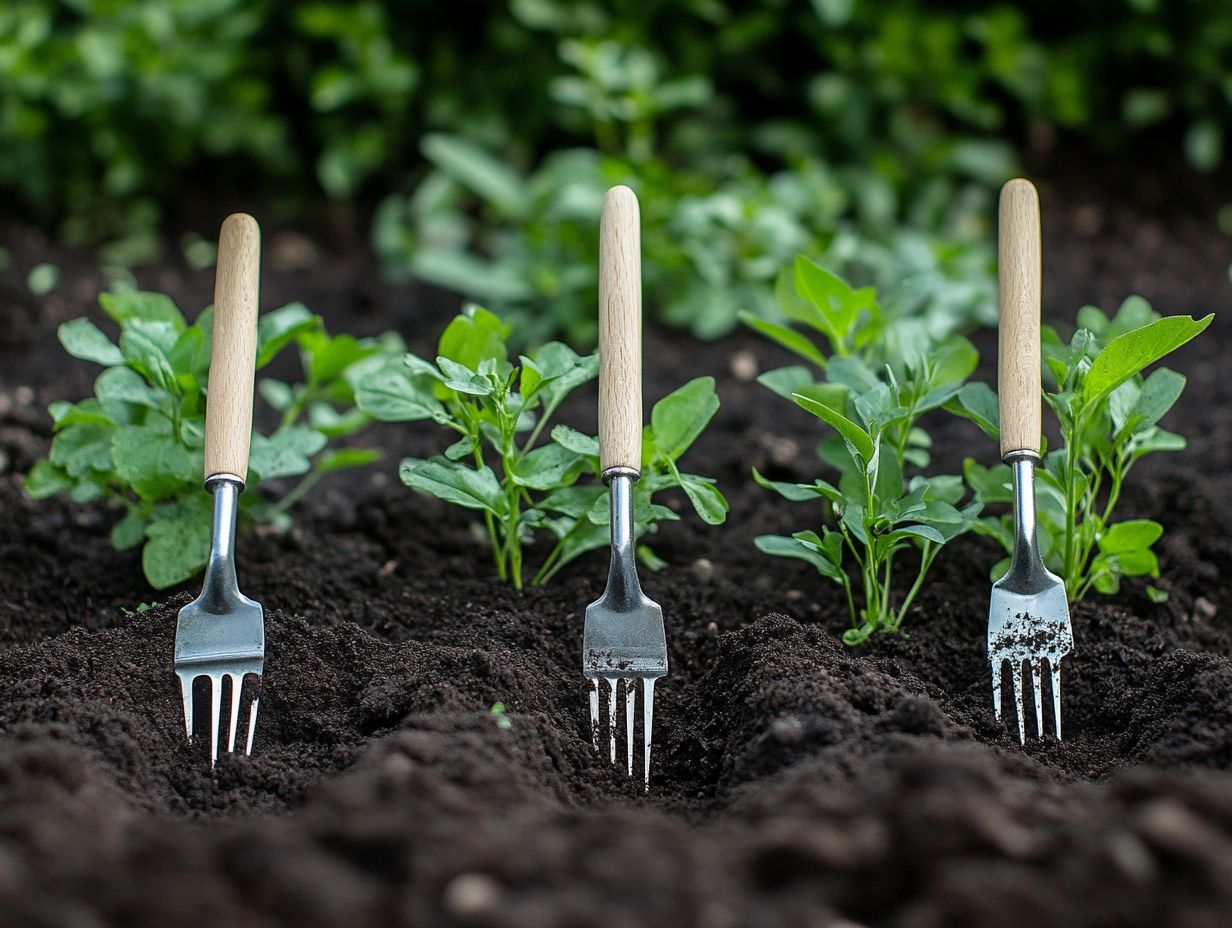
Exciting new soil aeration technologies are on the horizon! They promise to revolutionize your agricultural practices and enhance both efficiency and effectiveness in nurturing soil health.
These advancements improve the physical structure and texture of your soil. They also help water and nutrients move better, which supports crop growth and resilience.
By embracing cutting-edge methods such as micro-tillage, which uses small tools to loosen the soil without disturbing it too much, and double digging, which involves digging two layers of soil to improve aeration, you can achieve optimal soil conditions with minimal disturbance, allowing beneficial microorganisms to thrive, perfectly aligning with sustainable farming objectives.
Integrating these technologies allows you to reduce environmental impacts, supporting a healthier ecosystem that balances microbial activity and soil fertility while maximizing productivity and crop yields, ultimately creating a healthier ecosystem that meets both modern agricultural needs and the planet’s future.
This holistic approach encourages you to adopt practices like cover crops and livestock integration that contribute to long-term sustainability, ensuring that your farming efforts are both productive and environmentally responsible.
Frequently Asked Questions
What are the 3 innovative techniques for soil aeration?
The three innovative techniques for soil aeration are core aeration, liquid aeration, and mechanical aeration.
How does core aeration work?
Core aeration involves removing small cores of soil from the ground, allowing for better air and water flow to the roots of plants and their root systems.
What is liquid aeration?
Liquid aeration is a process of spraying a liquid solution onto the soil, which helps break up compacted soil and improve aeration.
How does mechanical aeration benefit the soil?
Mechanical aeration uses machines such as aerators or tillers to loosen and aerate the soil, promoting root growth and enhancing nutrient uptake.
Which type of soil benefits the most from aeration?
Aeration works wonders for heavy, compacted soils and clay! It supercharges air and water flow within the soil.
Can aeration be harmful to plants?
No, aeration benefits plants and their roots when done correctly. Improper techniques can harm them, so be cautious!

